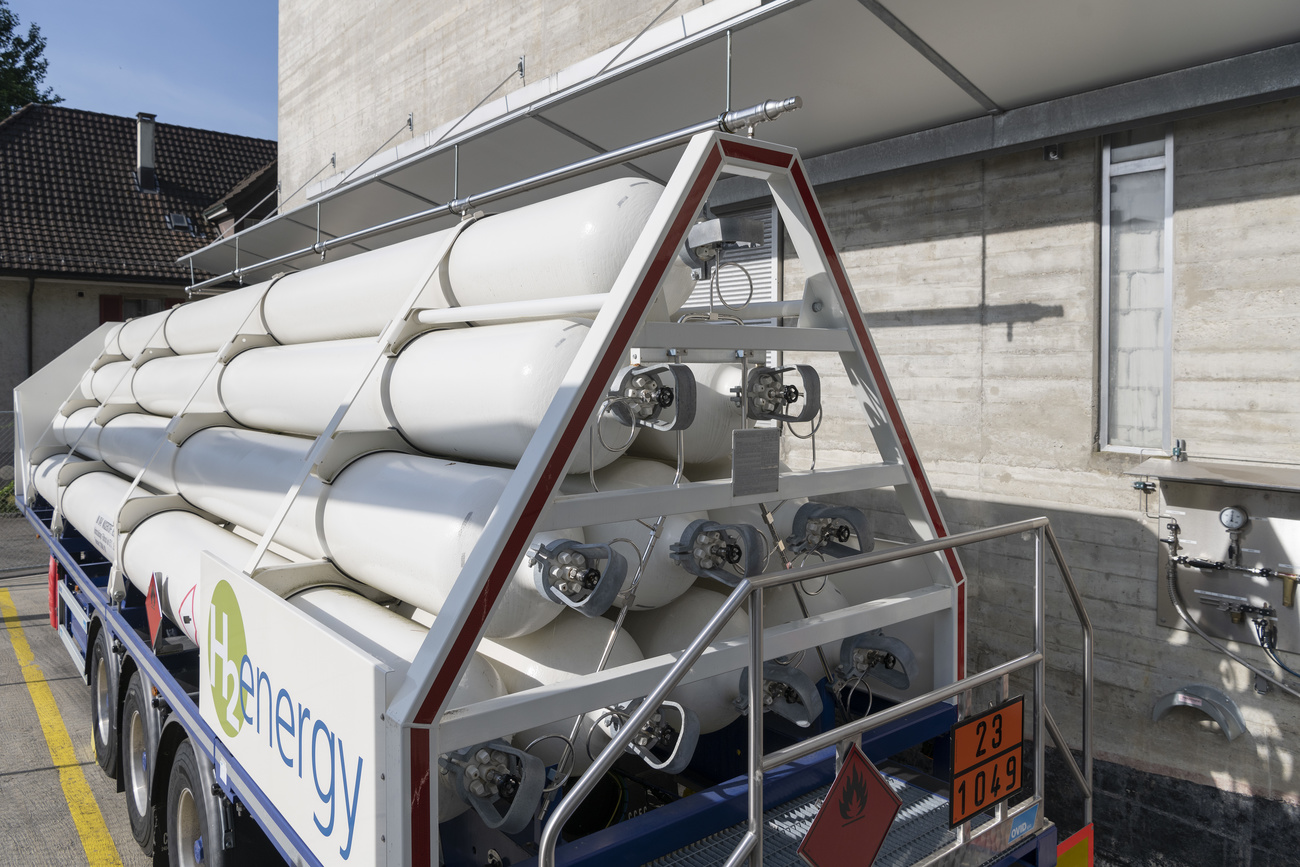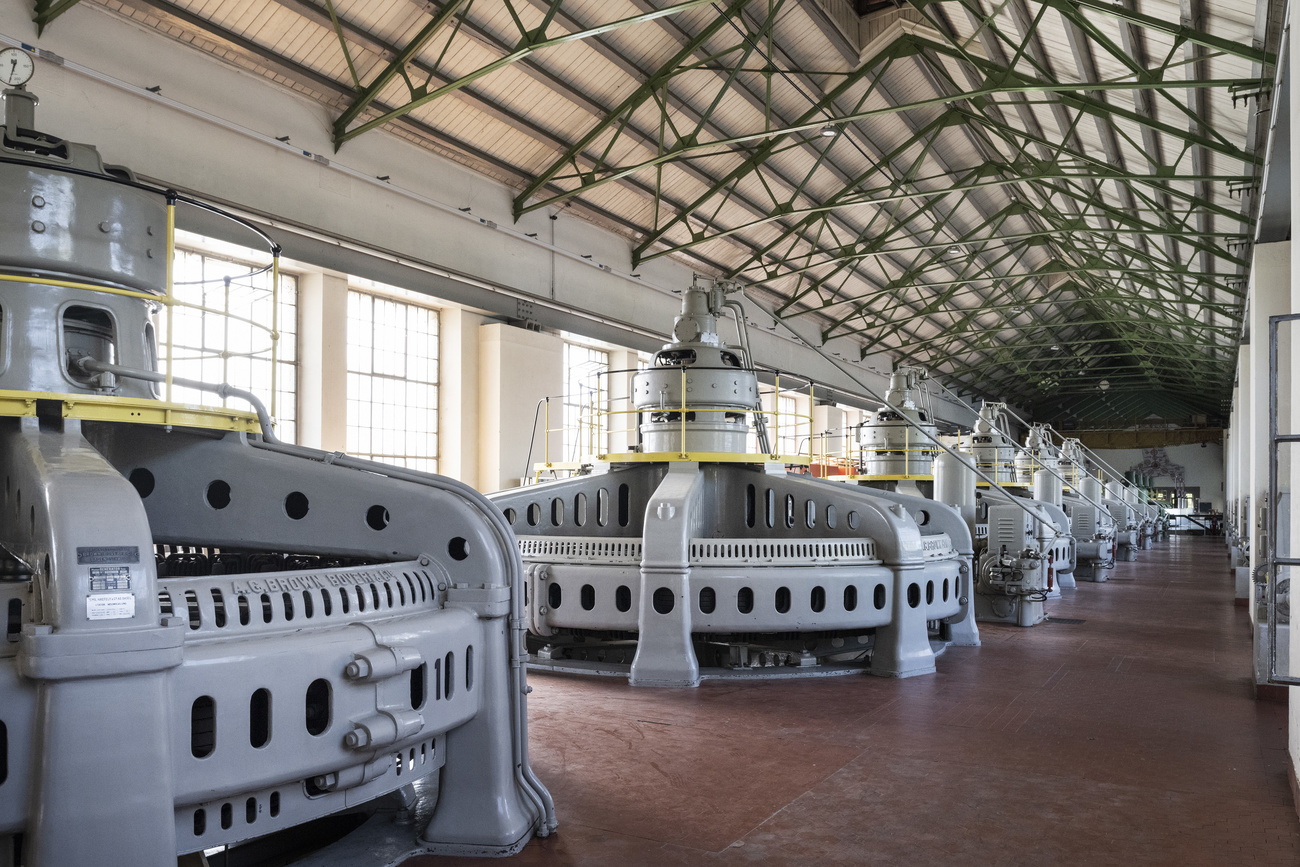Green hydrogen: an opportunity to be carefully managed
Green hydrogen can help reduce emissions from industry and heavy transport and is among the topics discussed at the ongoing COP28 climate talks in Dubai. But the development of this renewable fuel comes with challenges and its use should be well thought out, says Alessandra Motz, a researcher at the University of Lugano in Switzerland.
There has been much talk in recent years about hydrogen’s role in the clean energy transition, particularly in sectors that cannot rely only on electricity. It could supply heat for glass manufacturing, for example, or fuel aircraft and ships. There are, indeed, several ways to produce hydrogen, with different impacts in terms of greenhouse gas emissions. Hydrogen is said to be “green” if we use renewable electricity to produce it. This is now a promising prospect, as electricity from solar and wind farms has become much cheaperExternal link than in the past.
The most immediate contribution is to replace “grey” hydrogen, that is, hydrogen derived from fossil sources, which is already used in some industrial processes and refining. Hydrogen consumption in Switzerland is limited – a 2018 studyExternal link calculates around 13,000 tonnes per year – but globally, demand has reached 94 million tonnes by 2021, of which less than 1% is low-emission.
Hydrogen is a zero-carbon fuel and can be used as a battery to store renewable energy. The challenge is to be able to extract it profitably from underground or to produce it from renewable sources, in large quantities and at an acceptable cost.
Hydrogen is also among the major themesExternal linkExternal link at the United Nations climate change conference in Dubai (COP28) from November 20-December 12. This article is part of a series exploring the potential and limitations of hydrogen and the role of science and industry in the search for the green fuel of the future.
However, the technologies that allow hydrogen to be used are still very new and evolving rapidly. This leaves room for uncertainty about where and how to use hydrogen efficiently. It could happen, for example, that the direct use of electricity becomes cheaper than the use of green hydrogen in some consumption segments. In the case of heavy land transport, for example, some experiences suggest that the costs of hydrogen trains and even hydrogen trucks may be higher than expected. Fuel cell cars also seem destined for a residual market share, given the success of electric cars. In the case of air and sea transport, however, hydrogen seems more promising, either in pure form or as a component of synthetic fuels, which can already be blended with conventional fuels.
The main challenge is to produce green hydrogen without diverting renewable electricity from other more environmentally and economically beneficial uses. The growth of renewable sources in Switzerland, Europe and elsewhere in the world is not yet sufficient to ensure a zero-emission electricity supply, so it is important to create favourable conditions for hydrogen research and investment without derailing the transition path to direct use of clean electricity, which remains a priority.
The uses of hydrogen should be well thought out. This is because hydrogen is not an energy source, but rather an energy vector. For example, the surplus electricity from solar farms could be used to produce green hydrogen that can be stored for times when these plants do not meet demand. In short, hydrogen could be used as a battery to store electricity from the summer months and release it again in the winter, which would be particularly useful for Switzerland.
However, this process has a high cost, related both to the energy losses involved in the two transformations (the efficiency of the process is estimated at 25-30%) and to the costs of storing and possibly transporting the hydrogen. It should also not be forgotten that a large surplus of renewable electricity would have to be generated in the summer months.

More
Swiss start-up Destinus enters hypersonic flight race, powered by hydrogen
With regard to production, it will be important to adopt a clear definition of green hydrogen in Switzerland, possibly in line with that adopted in the European UnionExternal link. This will serve to enable cross-border trade and protect Swiss consumers with respect to the sustainability of imported hydrogen.
Concerning the development of new infrastructure, it will be necessary to understand the level of demand for green hydrogen in Switzerland and abroad to create a competitive and efficient supply chain. After an initial phase of developing localised clusters, some pipelines, such as Transitgas in Switzerland, could be converted to hydrogen transport at a reasonable cost, along with some natural gas storage sites and regasification terminals. However, it will be important to avoid investments that are oversized or inconsistent with the Swiss and global energy and decarbonisation scenarios.
The possibility of producing green hydrogen at low cost and exporting it to profitable markets is also an attractive opportunity for many countries currently focused on hydrocarbons and could accelerate the path to diversification and transition. For some countries in Eastern Europe and North Africa, for example, a partnership with Switzerland and the European Union would be advantageous, given their geographic proximity and the presence of natural gas infrastructure that could be repurposed. Green hydrogen is also a tool to involve the gas industry in the energy transition, which could benefit from a longer use of its existing infrastructure and contribute through its expertise.
When weighing up the various pros and cons of the energy transition, green hydrogen may therefore become extremely significant despite the different caveats, particularly for the most exposed sectors and countries in the hydrocarbon economy. The path is not yet well marked out and requires some balance, but it is worth pursuing.
The views expressed in this article are solely those of the author, and do not necessarily reflect the views of SWI swissinfo.ch.

In compliance with the JTI standards
More: SWI swissinfo.ch certified by the Journalism Trust Initiative
















You can find an overview of ongoing debates with our journalists here . Please join us!
If you want to start a conversation about a topic raised in this article or want to report factual errors, email us at english@swissinfo.ch.